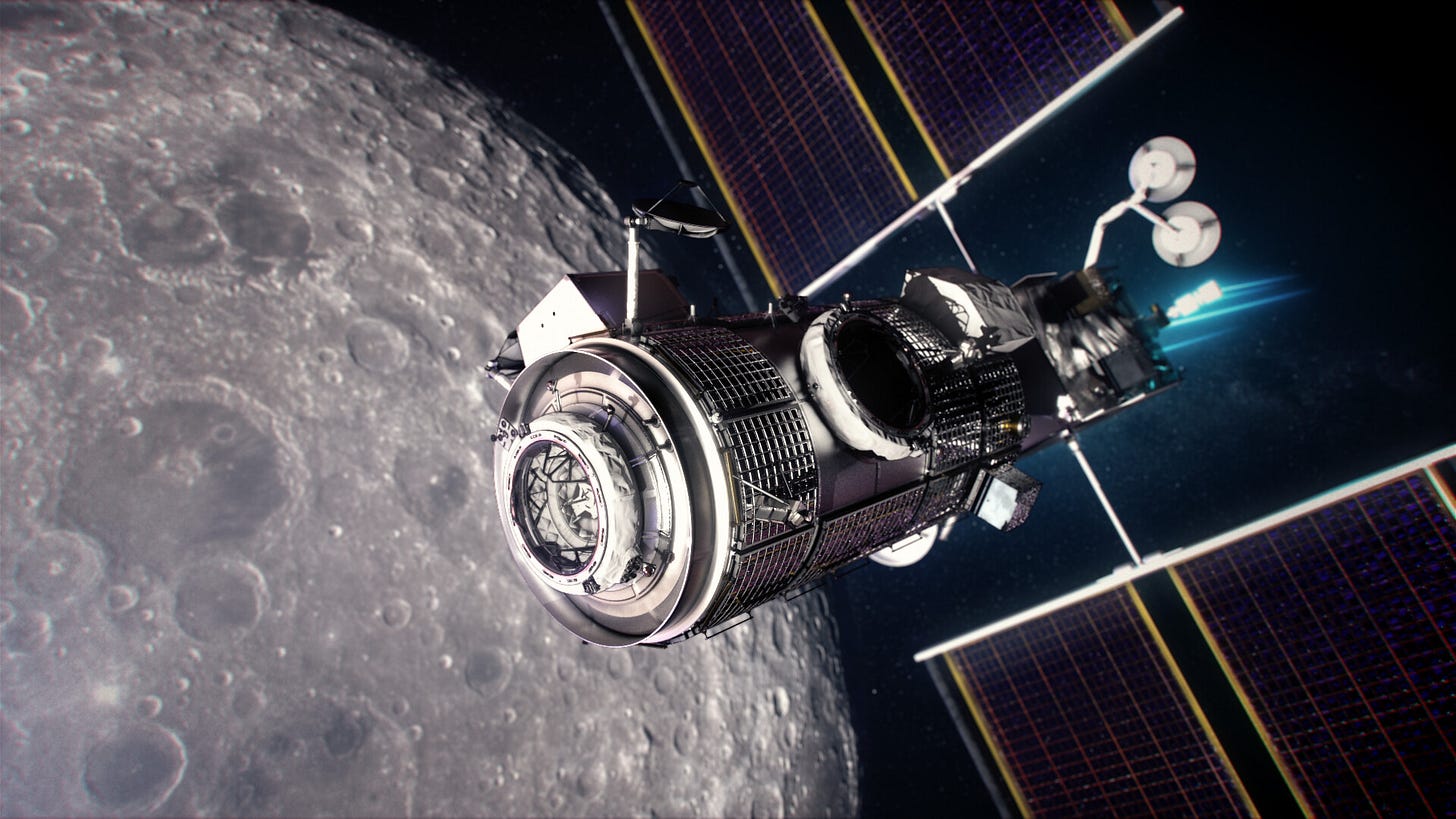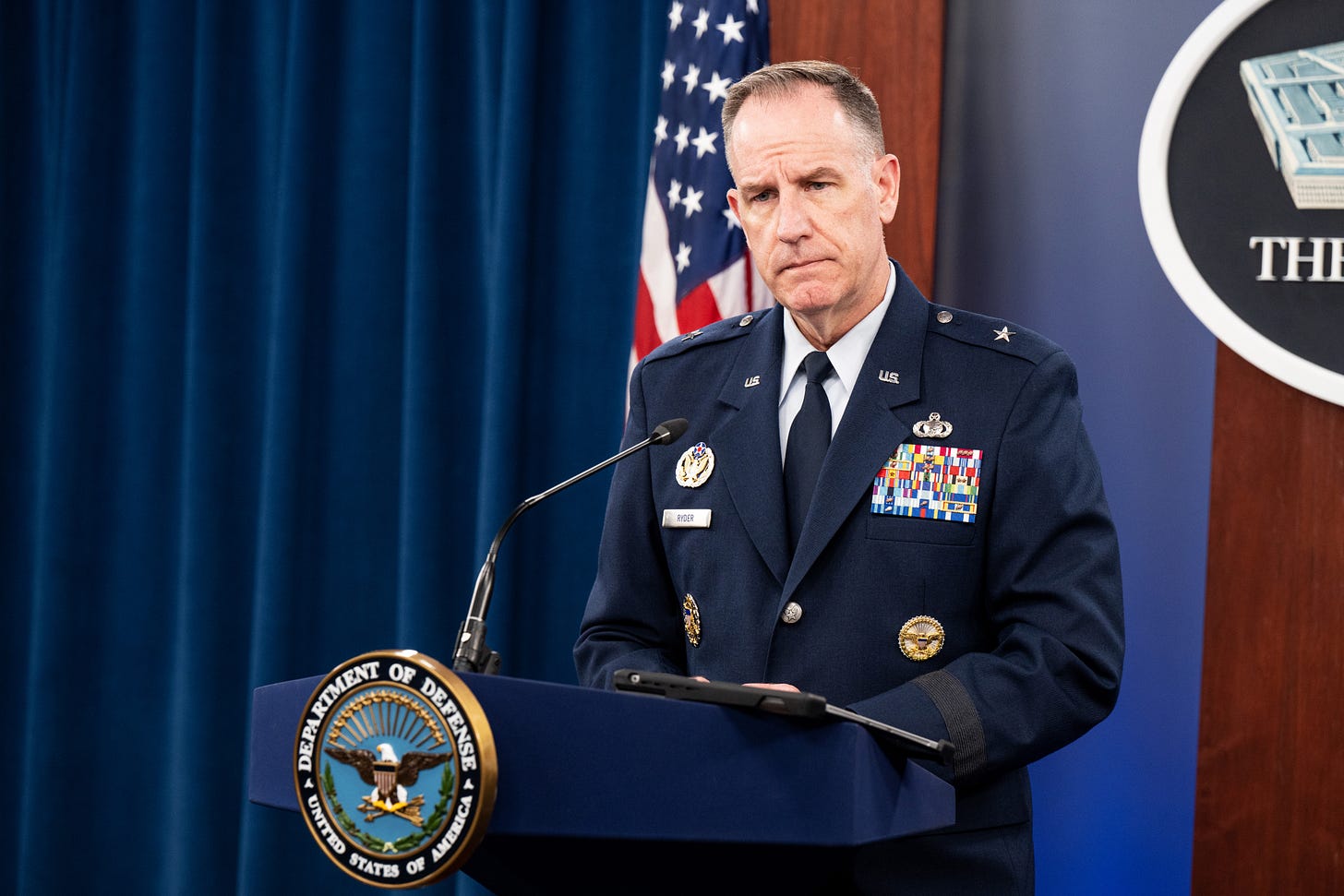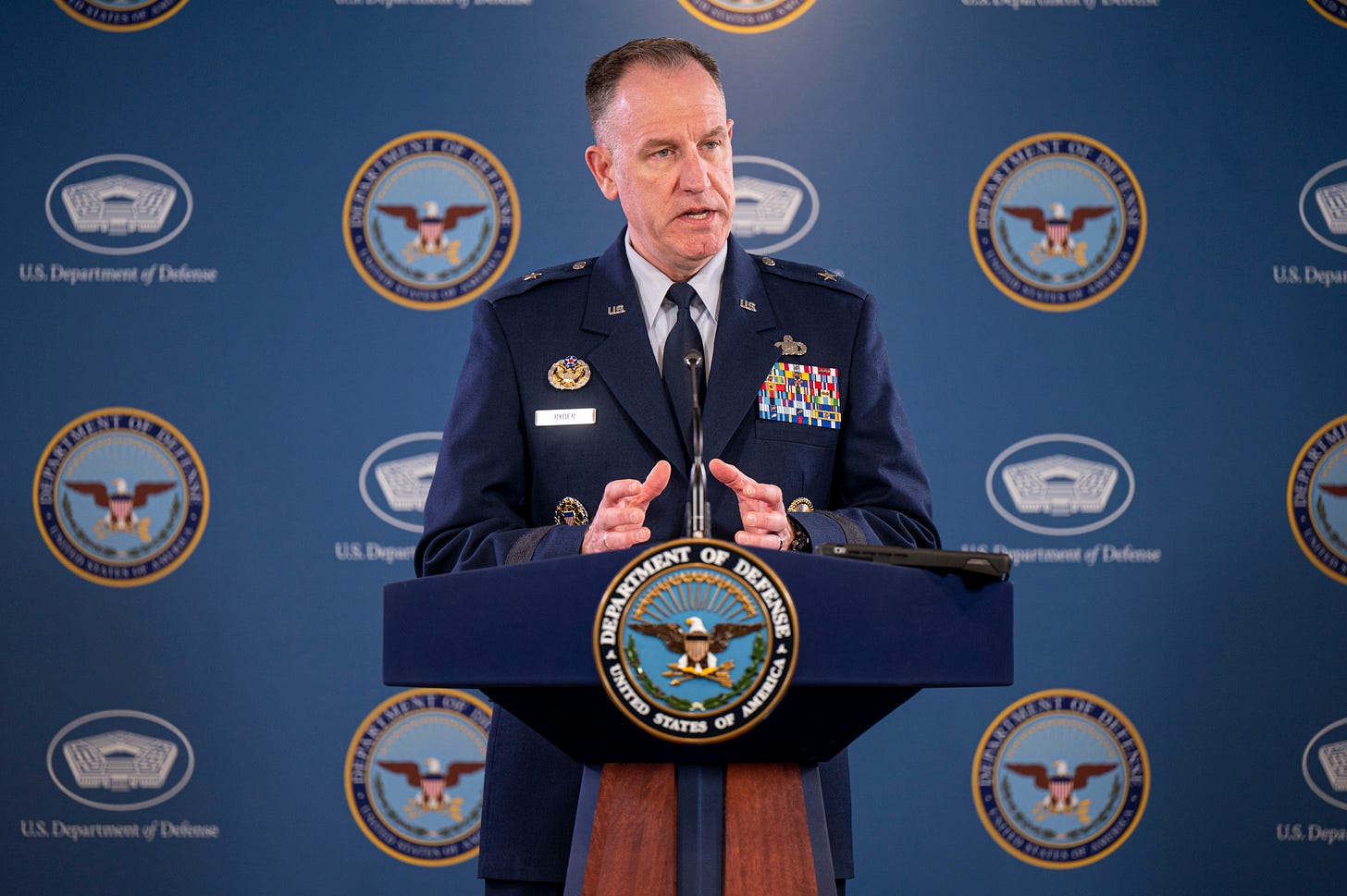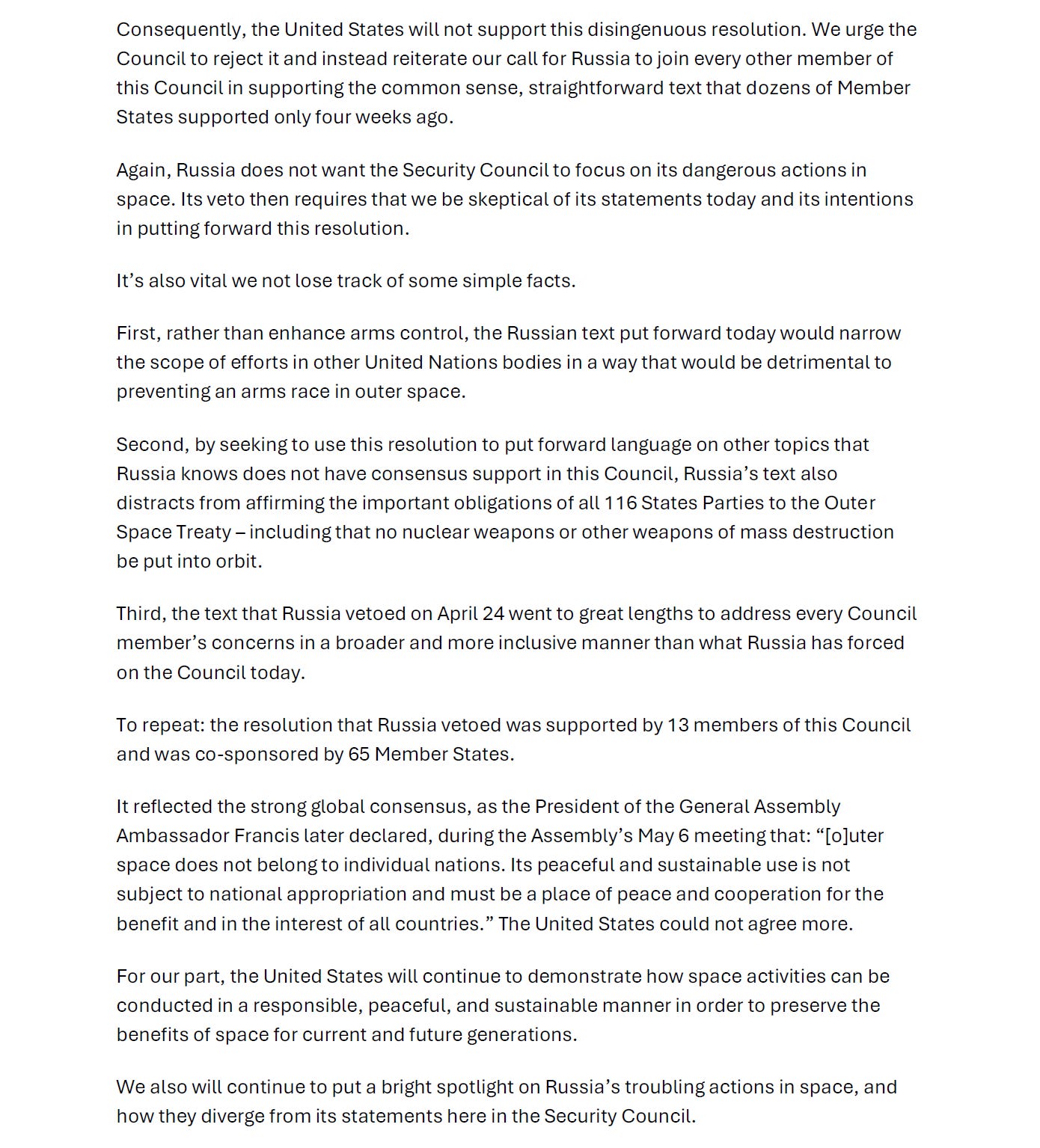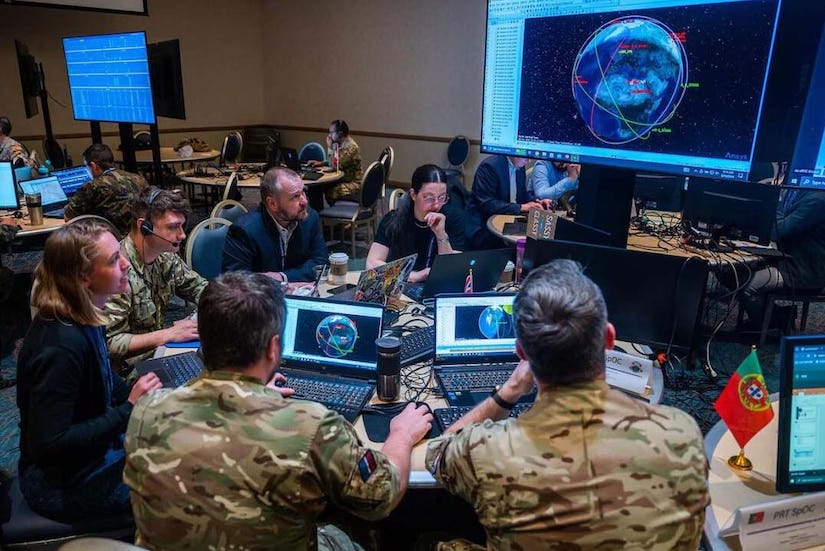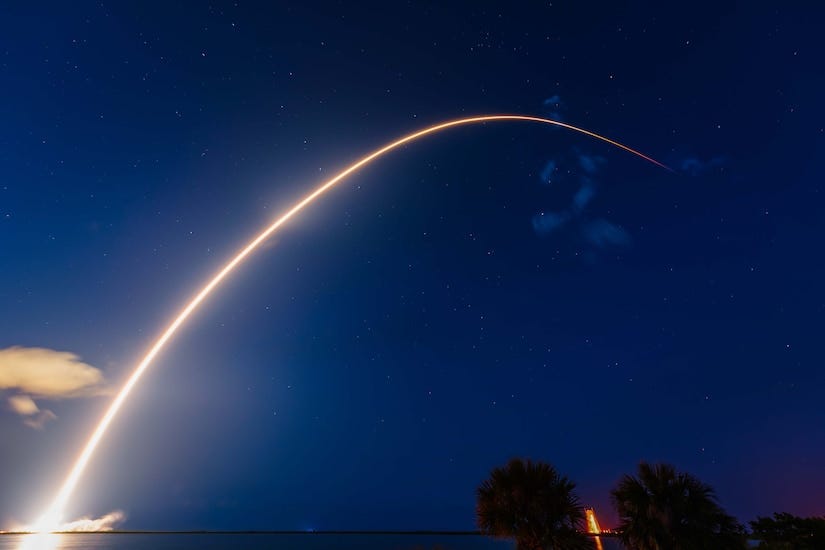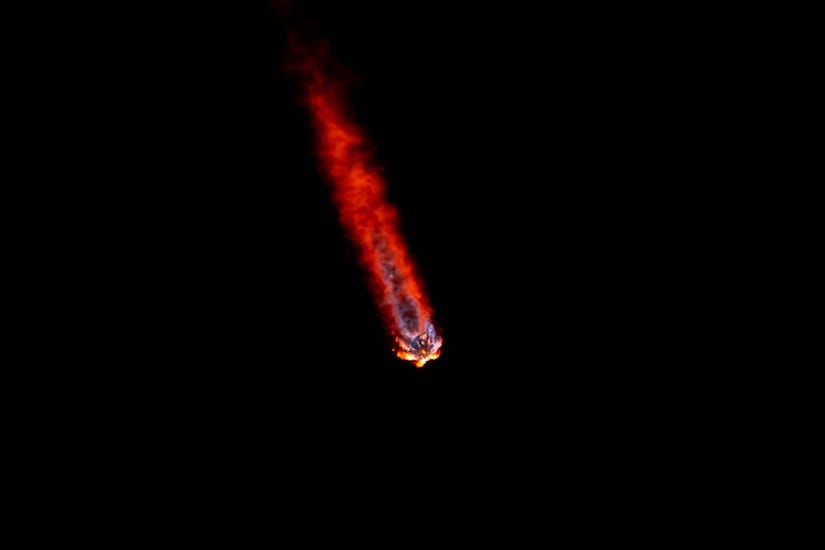Russia Launched Counter-Space Weapon In The Same Low-Earth Orbit As US Government Satellite
When Ryder was asked whether it posed a threat to the U.S. Government satellite right now, he replied and said, "Well, it's a counter-space weapon in the same orbit as a U.S. government satellite".
PENTAGON - Russia has launched a low-orbit satellite that the Department of Defense assesses is likely a counter-space weapon which it says it presumes has the purpose of attacking other satellites in low orbit around the earth.
Furthermore, the orbit of the device launched by Russia has been placed within the same orbit as a U.S. Government satellite, according to the Pentagon, which says it's currently monitoring the device.
Pentagon Press Secretary Pat Ryder said during a briefing, "We have a responsibility to be ready to protect and defend the domain - the space domain and ensure continuous and uninterrupted support to the Joint and Combined Force.
And we'll continue to balance the need to protect our interests in space with our desire to preserve a stable and sustainable space environment."
Ryder also said during the briefing, "What I'm tracking here is on May 16th, as you highlight, Russia launched a satellite into low Earth orbit that we - that we assess is likely a counter-space weapon presumably capable of attacking other satellites in low Earth orbit.
Russia deployed this new counter-space weapon into the same orbit as a U.S. government satellite. And so assessments further indicate characteristics resembling previously deployed counter-space payloads from 2019 and 2022. And so, you know, obviously that's something that we'll continue to monitor.
Certainly, we would say that we have a responsibility to be ready to protect and defend the domain - the space domain and ensure continuous and uninterrupted support to the Joint and Combined Force. And we'll continue to balance the need to protect our interests in space with our desire to preserve a stable and sustainable space environment."
When Ryder was asked whether it posed a threat to the U.S. Government satellite right now, he replied and said, "Well, it's a counter-space weapon in the same orbit as a U.S. government satellite, so.."
When asked if the Pentagon knew there was a launch by Russia into space he said, "Typically when there - when there are launches into space, there are requirements in terms of notifications - international notifications, notifications to airmen, things like that.
So the question is did we have advanced notice of that launch? As it relates to payloads and - and what we know about and what we don't know about, i.e. intelligence, that - that is not something I can get into."
During a United Nations Security Council meeting on a resolution on the prevention of an arms race in outer space & outer space security, Robert Wood, U.S. representative in the UN, highlighted Russia's actions in space & how the U.S. will continue to demonstrate safe space activities.
During the meeting, he addressed the launch by Russia, saying that the United States will continue to put a "bright spotlight" on Russia's "troubling actions in space", and how the actions "diverge from its statements here in the Security Council".
He told the Security Council, "On March 16th Russia launched a satellite into low-earth orbit that the United States assesses is likely a counter-space weapon that is presumably capable of attacking other satellites in low-earth orbit.
Russia deployed this new counter-space weapon in the same orbit as a U.S. Government satellite. Russia's May 16 launch follows prior Russian satellite launches likely of counter-space systems into low-earth orbit in 2019 and 2022".
Defcon Alerts Global Threat Monitor is a reader-supported publication. To receive new posts and support my work, consider becoming a free or paid subscriber.
Remarks Before the Vote on a Russia-Drafted UN Security Council Resolution on Outer Space Security
Ambassador Robert Wood, Alternative Representative for Special Political Affairs on May 20, 2024
Thank you, Mr. President.
Colleagues, we are here today because Russia seeks to distract global attention from its development of a new satellite carrying a nuclear device.
On April 24, Russia vetoed a resolution, supported by 13 members of the Security Council that called on all Member States not to develop nuclear weapons specifically designed to be placed in orbit.
That resolution, which was a product of nearly two months of constructive negotiations and co-sponsored by 65 countries, reflected a simple reality: placement of a nuclear weapon into orbit would not only violate the Outer Space Treaty, it would also threaten human spaceflight as well as the vital communications, scientific, meteorological, agricultural, commercial, and national security services that any and all satellites provide to people around the globe.
We have heard President Putin say publicly that Russia has no intention of deploying nuclear weapons in space. If that were the case, Russia would not have vetoed that resolution.
Over the past several weeks, and following widespread condemnation from a geographically diverse group of Member States in the General Assembly on May 6, Russia has sought to distract from its dangerous efforts to put a nuclear weapon into orbit. The culmination of Russia’s campaign of diplomatic gaslighting and dissembling is the text before us today.
Drafted through a hasty process that did not take into account legitimate, repeated, and shared concerns by a majority of this Council, Russia’s resolution does not achieve the simple task that we set out to achieve several months ago: reaffirm the basic obligations of the Outer Space Treaty and avoid a nuclear arms race in space.
Consequently, the United States will not support this disingenuous resolution. We urge the Council to reject it and instead reiterate our call for Russia to join every other member of this Council in supporting the common sense, straightforward text that dozens of Member States supported only four weeks ago.
Again, Russia does not want the Security Council to focus on its dangerous actions in space. Its veto then requires that we be skeptical of its statements today and its intentions in putting forward this resolution.
It’s also vital we not lose track of some simple facts.
First, rather than enhance arms control, the Russian text put forward today would narrow the scope of efforts in other United Nations bodies in a way that would be detrimental to preventing an arms race in outer space.
Second, by seeking to use this resolution to put forward language on other topics that Russia knows does not have consensus support in this Council, Russia’s text also distracts from affirming the important obligations of all 116 States Parties to the Outer Space Treaty – including that no nuclear weapons or other weapons of mass destruction be put into orbit.
Third, the text that Russia vetoed on April 24 went to great lengths to address every Council member’s concerns in a broader and more inclusive manner than what Russia has forced on the Council today.
To repeat: the resolution that Russia vetoed was supported by 13 members of this Council and was co-sponsored by 65 Member States.
It reflected the strong global consensus, as the President of the General Assembly Ambassador Francis later declared, during the Assembly’s May 6 meeting that: “[o]uter space does not belong to individual nations. Its peaceful and sustainable use is not subject to national appropriation and must be a place of peace and cooperation for the benefit and in the interest of all countries.” The United States could not agree more.
For our part, the United States will continue to demonstrate how space activities can be conducted in a responsible, peaceful, and sustainable manner in order to preserve the benefits of space for current and future generations.
We also will continue to put a bright spotlight on Russia’s troubling actions in space, and how they diverge from its statements here in the Security Council.
Indeed, just last week, on May 16, Russia launched a satellite into low Earth orbit that the United States assesses is likely a counterspace weapon presumably capable of attacking other satellites in low Earth orbit. Russia deployed this new counterspace weapon into the same orbit as a U.S. government satellite.
Russia’s May 16 launch follows prior Russian satellite launches likely of counterspace systems to low Earth orbit in 2019 and 2022.
Colleagues, I urge you to vote “no” on this distraction and to join us in pressing Russia to cease its obstruction here in the Security Council.
And we urge you to join us in making clear to Russia that the world will not turn a blind eye to its dangerous and unprecedented efforts to develop a new satellite carrying a nuclear device, which undermines its obligations under the Outer Space Treaty and counters the views of an overwhelming majority of members of the Security Council.
Thank you, Mr. President.
###
Thank you, Mr. President. I apologize for taking the floor, but I obviously need to respond to the remarks made by the Russian representative. In answer to his question: Yes, I read your bad text. Your text includes a lengthy binding mechanism that cannot be verified. That is clear.
We have had those discussions in Geneva before with regard to the type of treaty that you would like to see come into place. So, we’ve seen this movie before. But what I would submit to my Russian colleague is that we let the Council decide on his text. And we’re about to do that. Thank you.
Space Officials Address Key Counterspace Challenges Posed By Russia And China
PENTAGON: The Defense Department remains focused on maintaining its edge in space as competitors attempt to shift the balance in the domain, a top space official from the Pentagon said today.
In testimony before a Senate Armed Services subcommittee, John D. Hill, deputy assistant secretary of defense for space and missile defense, outlined key investments in DOD's budget request for fiscal year 2025 needed to keep pace with challengers to the U.S. in the space-warfare domain.
"We are clearly in a time of rapid change in the space strategic environment," Hill told the Strategic Forces Subcommittee. "One that does not favor the slow or those resistant to change."
He noted efforts by China and Russia to rapidly field space and counterspace capabilities meant to degrade and challenge the joint forces' use of space-based services that provide warfighters with key advantages on the battlefield.
"The scale and scope of the threats in space present significant risks to the American people, to our national interests, [and] to allies and partners," Hill said.
Hill was joined by Frank Calvelli, assistant secretary of the Air Force for space acquisition and integration, and Gen. Michael A. Guetlein, the Space Force's vice chief of space operations, in testifying before the subcommittee. They further underscored the need for urgent action to maintain U.S. leadership in space.
"Space has never been more critical to the security of our nation, and the success or failure of the joint force depends heavily upon the capabilities that we present," Guetlein said. "Repeated actions by both the Russian Federation and the People's Republic of China underscore the urgency for action.”
"Although we still maintain control of space over our competitors, they are still working hard to close the gap and assert their dominance in space," he added. "We cannot let this happen."
Hill highlighted key programs included in DOD's budget request that are aimed at ensuring the U.S. is postured to maintain its dominance in space.
The budget request includes $33.7 billion dollars for space programs in fiscal year 2025. Those investments include $2.4 billion for space launch capabilities; $1.5 billion for more resilient position, navigation, and timing; and $4.2 billion for more resilient and protected satellite communications.
The request also includes $4.7 billion to develop new missile warning and tracking architectures and $12.3 billion for a range of other capabilities aimed at increasing the resiliency of DOD's existing space architectures.
Hill also highlighted key initiatives the department has undertaken recently to ensure warfighters maintain the space advantage.
Those include efforts to expand U.S. cooperation with allies to chart a path toward interoperability in space and strengthening collective deterrence. The department has also worked to remove obstacles that have impeded information sharing among the services and with allies.
Hill also highlighted this year's release of DOD's commercial space integration strategy, which outlines the department's approach to harnessing private sector space technology innovation.
The strategy highlights four priorities to achieve integration with the commercial partners.
First, it calls for outlining DOD's requirements in contracts and other agreements to ensure commercial solutions are available when needed.
Second, the strategy calls for the integration of commercial solutions into defense architecture during peace time — including planning, training and day-to-day operations — to ensure warfighters can seamlessly utilize those solutions during crisis or conflict.
Third, the strategy calls for protecting and defending against threats to U.S. national security space assets — including those in space and on the ground — and commercial space capabilities, where appropriate.
Finally, the strategy emphasizes that DOD will use its full range of financial, contractual, and policy tools to support the development of new, commercial space solutions that have the potential to support the joint force.
During his testimony, Hill said DOD will continue to advance on key policy objectives to ensure the U.S. maintains its edge in space.
"I believe the progress we've already made together will pay dividends for years to come," he said.


